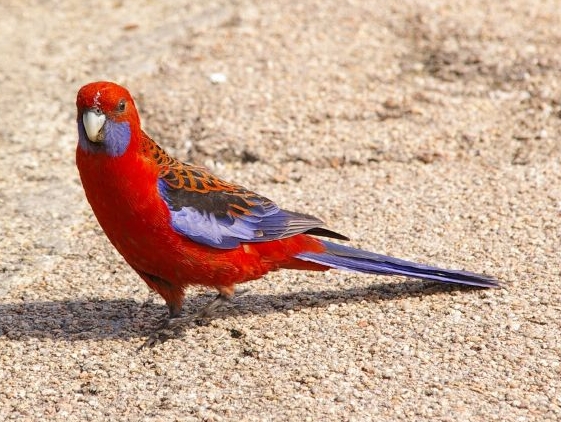 Crimson rosellas, colorful parrots much favored as pets, follow a unique strategy when rearing their young.
Crimson rosellas, colorful parrots much favored as pets, follow a unique strategy when rearing their young.
The Typical Scenario
Rosella eggs, like those of all parrots, hatch in the order they were laid, so that the first chick to emerge has a few days head-start on the last. In most bird species where this occurs, the first chick out of the egg out-competes the others, as parents tend to feed the largest, noisiest mouth that confronts them. This assures that, in times of food scarcity, at least one chick may survive, albeit at the expense of the others.
A Twist – Choosing Which Chick Will be Fed
I recently watched some footage that indicated that adult crimson rosellas apportion food given to chicks equally, so that all survive and fledge at about the same size. Upon considering this, I found it odd, as rosellas inhabit a harsh environment, where food shortages are likely, and so “should”, I reasoned, put the most resources into the largest chick.
Further research revealed that the complete story is even more surprising. Male and female rosella parents specifically identify individual chicks and selectively choose which to feed, based on varying criteria.
Males respond to the chick that seems hungriest at the time, as indicated by the volume of its call. Thus, males tend to distribute food equally among the brood…a sated chick becomes quiet, and another is fed. Females preferentially feed the last-hatched (smallest) chick…unless all are crying out for food, in which case they feed the oldest (largest) chick first.
Outcome in Good and Bad Times
In good times, this strategy assures that the youngest chick is well fed, and that all receive enough food. When food is scarce, however, and all chicks are hungry, the oldest will be fed more often by both the male (this chick will attract the male by its ability to beg more vigorously) and female. The elder chick is, therefore, only granted a survival advantage during lean years…when food is plentiful, all chicks are assured a good diet and an equal chance at fledging.
Rosella chicks have also been observed sharing food among themselves… more on that in the future.
A report concerning the Australia National University study that documented this behavior is posted at:
http://www.anu.edu.au/BoZo/magrath/pdfs/paper4.pdf
Image referenced from Wikipedia, and originally posted by Percita Dittmar
 That Bird Blog – Bird Care and History for Pet Birds
That Bird Blog – Bird Care and History for Pet Birds
